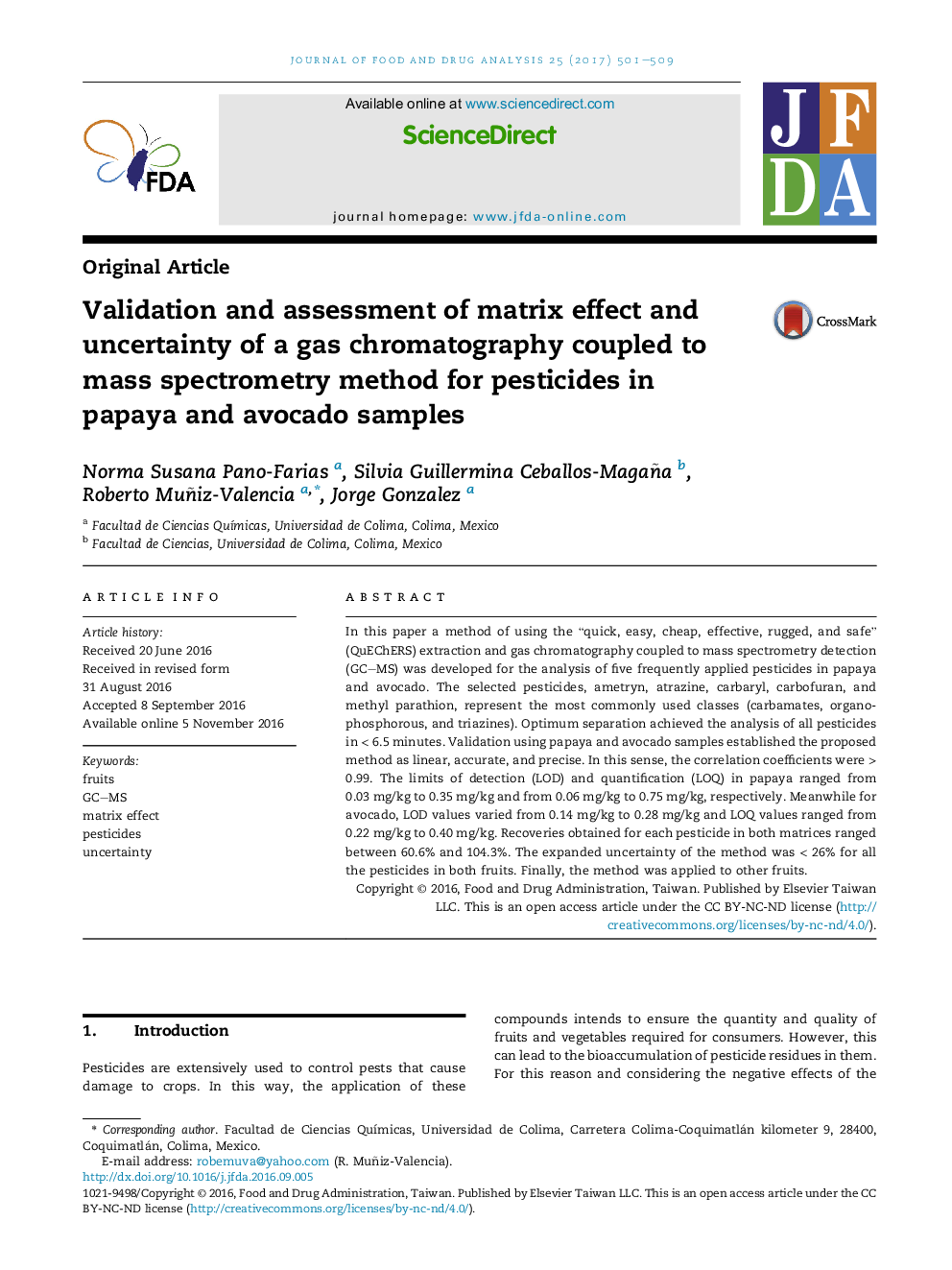| Article ID | Journal | Published Year | Pages | File Type |
|---|---|---|---|---|
| 5551033 | Journal of Food and Drug Analysis | 2017 | 9 Pages |
â¢A quantitative gas chromatographic method for pesticides analysis is reported.â¢The analytical method was validated.â¢Matrix effect is assessed.â¢A detailed uncertainty assessment was carried out.â¢A feasibility study for different fruits was done.
In this paper a method of using the “quick, easy, cheap, effective, rugged, and safe” (QuEChERS) extraction and gas chromatography coupled to mass spectrometry detection (GC-MS) was developed for the analysis of five frequently applied pesticides in papaya and avocado. The selected pesticides, ametryn, atrazine, carbaryl, carbofuran, and methyl parathion, represent the most commonly used classes (carbamates, organophosphorous, and triazines). Optimum separation achieved the analysis of all pesticides in < 6.5Â minutes. Validation using papaya and avocado samples established the proposed method as linear, accurate, and precise. In this sense, the correlation coefficients were > 0.99. The limits of detection (LOD) and quantification (LOQ) in papaya ranged from 0.03Â mg/kg to 0.35Â mg/kg and from 0.06Â mg/kg to 0.75Â mg/kg, respectively. Meanwhile for avocado, LOD values varied from 0.14Â mg/kg to 0.28Â mg/kg and LOQ values ranged from 0.22Â mg/kg to 0.40Â mg/kg. Recoveries obtained for each pesticide in both matrices ranged between 60.6% and 104.3%. The expanded uncertainty of the method was < 26% for all the pesticides in both fruits. Finally, the method was applied to other fruits.
Graphical abstractDownload high-res image (201KB)Download full-size image
